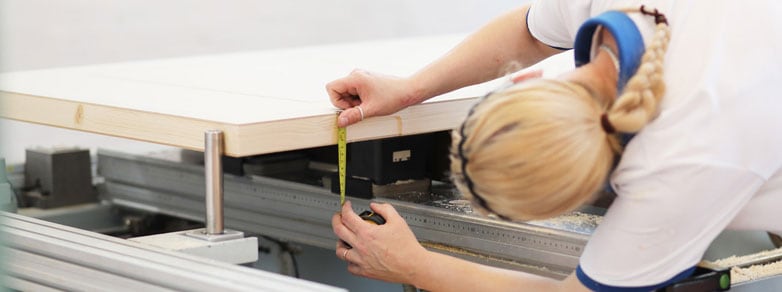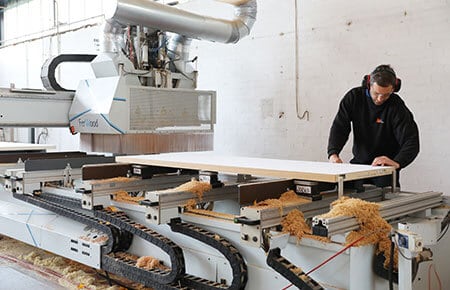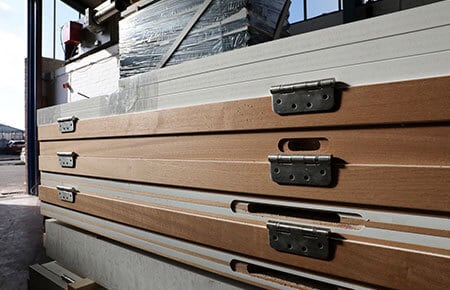Wood is a beautiful material, pure and simple.
If you look around the space you’re in right now, there’s a strong chance that something in there is made from one form of wood or another.
But whether it’s your door, cupboard, dresser or desk, could you correctly identify what type of wood it is?
The truth is there are numerous types of wood out there, each with their own characteristics, benefits and drawbacks, most of which will be covered in this article.
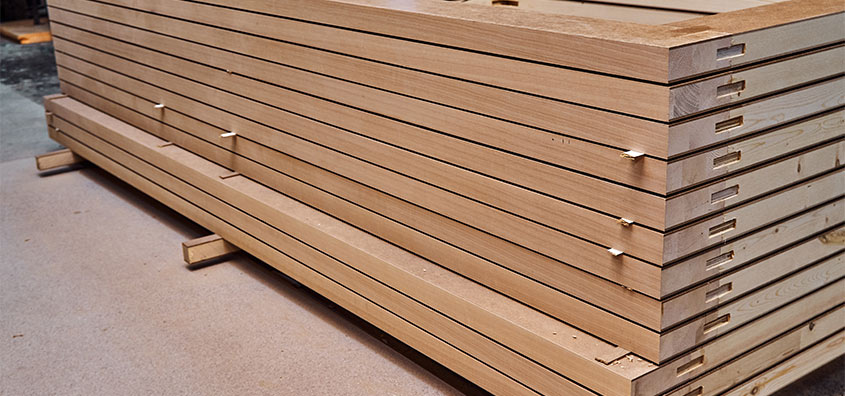
But for this we’re going to focus on different types of wooden doors, because, well, doors are what we do here at Vigor.
So if you’re thinking about changing or installing a wooden door, but you’re feeling STUMPED (sorry) then don’t worry, we’ve got you covered, we’re going to take you through the different types of wood you can use on your door, as well as the styles you can have!
The Woods
Let’s talk about the different types of woods you can use on your doors first.
Hardwood
Up first is hardwood.
Despite what the name might say, not all hardwoods are actually hard.
I know what you’re thinking, that’s false advertising, but the term actually refers to the fact that the wood is derived from a tree that produces seeds (angiosperm trees) with a protective covering.
Anyway, enough with the biology lesson, the most commonly used hardwood is oak, something we’ll look at in more detail later in the article, but other types include; elm, beech, mahogany, walnut and sycamore to name a few.

Both hardwoods and softwoods can be used to make furniture, but when it comes to doors, hardwoods are far more common, and with good reason.
Though less expensive, softwood is significantly less durable, as opposed to hardwood that if treated properly can last a lifetime.
That’s not to say that hardwood won’t warp or show damage over time, but they’re more durable and simply look better.
It can also be finished with a vast array of oils, paints and waxes that can give your door a unique look that stands out from the crowd.
Timber
Next is timber.
Timber is one of the oldest materials used for wooden doors, but there’s numerous reasons why it’s still used today.
Not only is it strong and secure, but also environmentally friendly, an important point to consider in today’s growing eco-centric society.
And again like hardwood, with the correct maintenance, timber will last longer than uPVC, aluminium and composite doors.
Solid Oak
As you might have guessed, the material for solid oak doors is cut from oak trees.
Mind blowing right?
Anyway, what’s important to note about oak wood doors is their raw aesthetic. That’s because, other than being shaped and dried, not much else is actually done to the wood before becoming a door.

Comfortably the most popular choice for external hardwood doors, with oak, you will benefit from a naturally sophisticated look with patterns unique to your door, adding a bit more personality to your household.
Beyond that, the greater density of oak means it’s wonderful at noise reduction. So if you’ve got particularly noisy neighbours, oak might just answer your prayers!
Noise cancellation important to you?
Why not read our complete guide on soundproof doors by clicking on the link below!
Soundproof Doors – What To Know Before You Buy
It’s important to note that oak brings TREE-mendous (sorry again) quality, so expect a higher price tag.
Pine
Perhaps the most commonly used softwood used in door construction, pine doors are often cheaper than oak doors, with many people preferring the way they look.
Pine is primarily used for the interior, due to the fact that it’s both very strong and easily workable.
Though less durable than oak, if you’re looking for a door on a budget, then pine might just be for you.
So stop PINING for them and get one yourself! (last one I promise)
The Styles
Now that we’ve covered the different types of wood, let’s move on to the different styles of wooden doors that are out there.
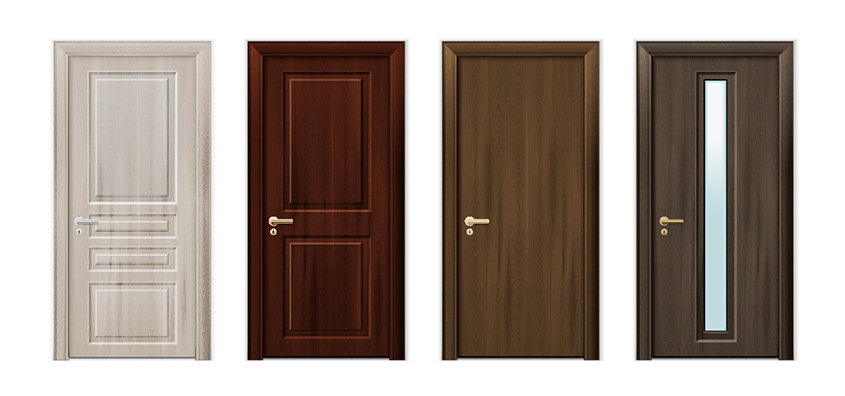
Battened and Ledged Doors
Being among the more traditional door designs, battened and ledged doors are typically used for sheds. However, you’ll be surprised how the style can fit into more contemporary interiors also.
Usually consisting of three vertical edges and two diagonal braces, the design gives it stability, making it an excellent option for external doors and narrow openings.
Wooden Dutch Doors
When you think about dutch doors, stable doors will probably pop into your head.
It’s style is a split look, offering users to only open the top without unlatching the bottom half.
Dutch doors grant its owners a clear outside view, meaning they will be handy within office spaces, particularly if you have a small office with a designated person making copies.
Using the top as a window, employees can pass on documents without the need to open doors.
Needless to say, if you’re an owner of a horse stable, this style is almost definitely for you!
Panelled Doors
Like the battened and ledged doors, panelled doors are another classic design for wooden doors.
The great thing about panelled doors is their adaptability.
They can flourish within a wide range of environments. In narrow openings such as passage doors, you can have a single leaf panel door, whereas in wider cases, a double leaf design instead.
Laminated Core Flush Doors
If you’re looking for a door that can withstand its fair share of wear and tear, look no further than laminated core flush doors.
Working well for the interior and exterior, solid-core doors are one of the most fire resistant options out there, whilst also being substantially more affordable compared to solid wood doors.
Wooden Louvered Doors
Think of this door as a hybrid, offering excellent ventilation and privacy simultaneously.
Most businesses opt for partially louvered doors, often to prevent cramped offices from becoming uncomfortable sweatboxes preventing any meaningful work from getting done.
Hollow Core-Doors
Last up are hollow-core doors.
Like louvered doors, hollow core doors are also used by businesses. Counting on a honeycomb cardboard core with a thin layer of wood around it, hollow core-doors are incredibly light and easily installed, making them a popular choice for all manner of interior doors.
Are you thinking about adding a little warmth and texture to your property? Why not get in touch with Vigor Doors today, let one of our expert team members find the perfect door for you! Call us on 01642 265 034 or email us at info@vigordoors.com
